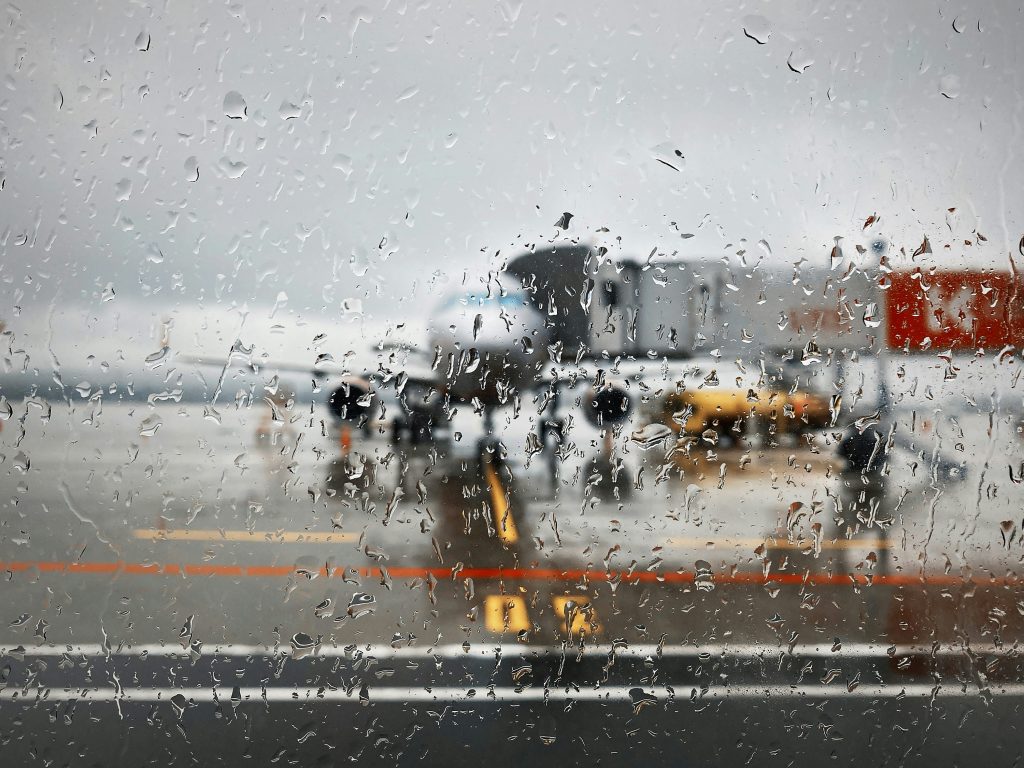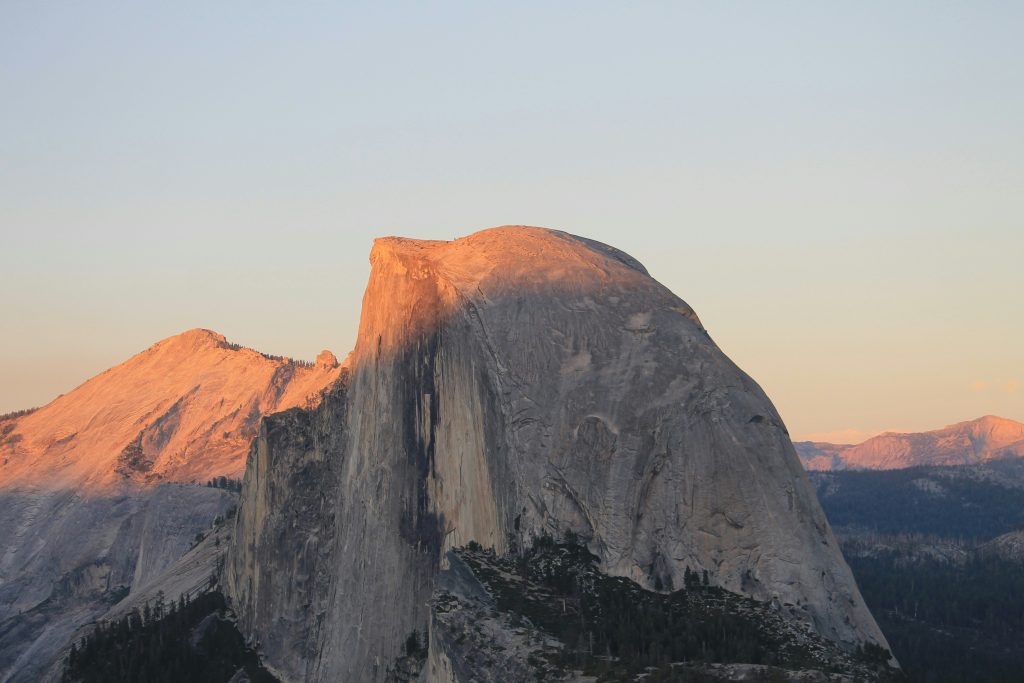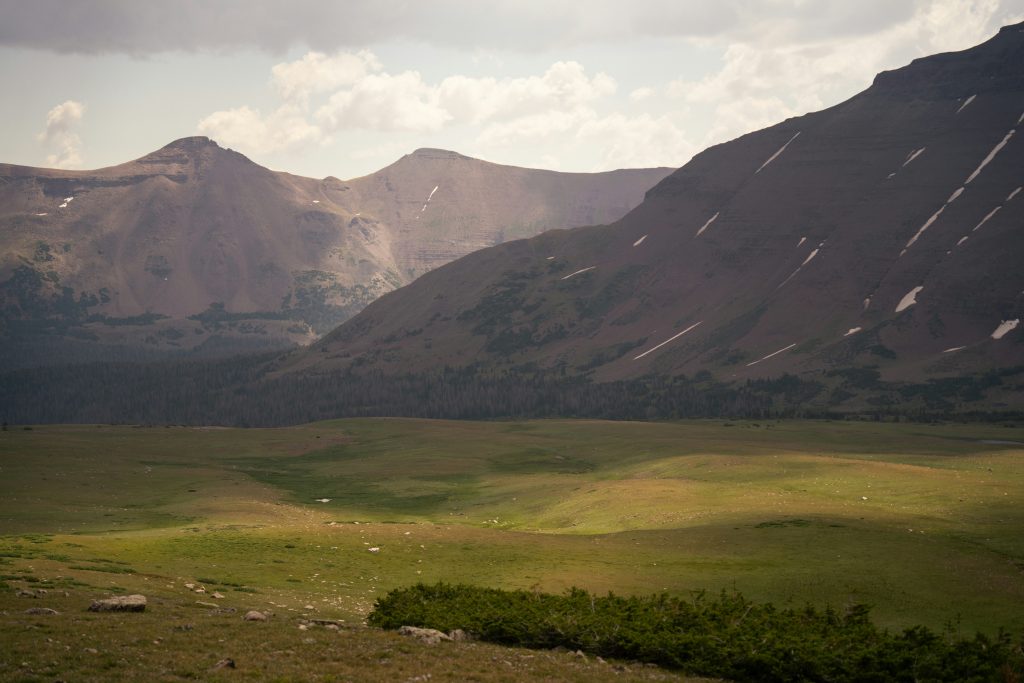Sheryl Crow Unplugs: A Symphony of Sustainability and Principled Protest
The electric hum of a Tesla once resonated with Sheryl Crow, a soundtrack to a greener future. But now, that hum has faded, replaced by the quiet satisfaction of principle. Crow, the voice behind anthems of independence and self-discovery, has publicly divested from her Tesla, not for reasons of performance or aesthetics, but as a potent symbol of her disagreement with Elon Musk’s actions and perceived influence on societal institutions. She’s not just selling a car; she’s selling an idea – the idea that individual choices, even seemingly small ones, can reverberate with larger meaning.
This isn’t simply a celebrity stunt. It’s a micro-level example of the growing tension between technological advancement and ethical responsibility. The rise of electric vehicles was once heralded as a universally positive step toward sustainability, a win-win for both consumers and the planet. But as companies like Tesla become increasingly intertwined with controversial figures and decisions, consumers are faced with a new dilemma: Can they embrace the technology while simultaneously rejecting the values associated with its creators?
Crow’s decision underscores this complex intersection. She’s not abandoning the concept of electric vehicles; she’s signaling that the source matters. She’s essentially saying, “I believe in the destination, but not if the journey compromises my values.” The proceeds from the sale of her Tesla will be donated to NPR, a public radio network she sees as vital in the pursuit of truth, especially given what she views as threats to its existence.
## The Ripple Effect: Beyond a Single Singer’s Statement
Crow’s action, while personal, taps into a larger cultural narrative of consumer activism. We are witnessing a shift from passive consumption to conscious consumption, where individuals are increasingly scrutinizing the ethical implications of their purchases. From boycotting fast fashion to supporting fair-trade coffee, consumers are using their wallets to express their values.
This trend is particularly relevant in the realm of environmentalism. As climate change intensifies, the pressure on companies to adopt sustainable practices is mounting. But it’s not enough to simply offer eco-friendly products; consumers also want to know that companies are operating with integrity, respecting human rights, and contributing to a more equitable world. When these expectations are not met, as Crow’s actions suggest, consumers are willing to make difficult choices, even if it means sacrificing convenience or personal preference.
Crow’s actions raise a profound question: In a world increasingly dominated by powerful individuals and corporations, what is the role of the individual in shaping a more just and sustainable future? Her answer, at least in this instance, is clear: Every decision matters. Every purchase is a statement. And every act of protest, no matter how small, can contribute to a larger chorus of change.
##### The Power of Symbolic Action
Beyond the monetary value, Crow’s decision resonates as a symbolic act. It is a reminder that even in a world saturated with information and noise, individual actions can cut through the clutter and spark meaningful conversations. By publicly severing ties with Tesla, she has amplified a discussion about the ethical responsibilities of tech giants, the importance of independent media, and the power of consumer activism.
##### A Call to Conscious Consumption
Ultimately, Sheryl Crow’s unplugging from Tesla is more than just a celebrity anecdote; it’s a microcosm of a larger societal shift. It’s a call to conscious consumption, a reminder that our choices have consequences, and that even the smallest act of protest can contribute to a more sustainable and equitable world. It’s a challenge to each of us to examine our own values and to align our purchasing decisions accordingly, even when it requires sacrifice. After all, the true sound of progress is not the electric hum of a car, but the resounding chorus of voices demanding a better future.
In the end, Crow’s actions serve as an inspiration, suggesting that even in a world grappling with immense and complex environmental challenges, individuals can and do have the power to drive change, one principled decision at a time.
Tags: Climate Change, Consumer Activism, Elon Musk, Environmentalism, Ethical Consumption, Medio Ambiente, Música, NPR, Protest, Sheryl Crow, Sostenibilidad, Sustainability, Tesla
The Whirling Dervish of Destruction: Navigating the New Normal of Tornado Alley
The sky churns, a canvas of bruised purple and angry grey. The air crackles with an almost palpable tension, a silent scream before the storm. It’s a scene becoming increasingly familiar across vast swathes of the American South: the prelude to a tornado. But this isn’t just another weather report; it’s a snapshot of a changing climate, a shift in the very rhythm of nature that demands a new approach to preparedness and awareness.
The old adage of ‘duck and cover’ feels woefully inadequate in the face of increasingly unpredictable and intense weather patterns. We’re no longer dealing with the predictable seasonal occurrences; instead, we’re witnessing a blurring of lines, with tornado activity springing up in unexpected months and regions, catching communities off guard.
Consider the recent alerts that spanned multiple states, from Georgia to Alabama, Tennessee to Florida. They weren’t isolated incidents; they were threads in a larger tapestry of extreme weather events, a reminder that the forces of nature are growing ever more volatile. The very language used by meteorologists – ‘severe thunderstorms capable of producing both tornadoes and extensive straight-line wind damage’ – paints a picture of dual threats, a double whammy of destruction that demands vigilance and proactive measures.
## Beyond the Basement: A Holistic Approach to Tornado Safety
Traditional tornado safety measures, while still vital, are no longer enough. Hiding in a basement or interior room remains crucial, but a comprehensive approach requires a deeper understanding of the risks and a commitment to community resilience.
Think of it like preparing for a chess match against an unpredictable opponent. You need to anticipate their moves, analyze the board, and have contingency plans ready. In the case of tornadoes, this means:
* **Enhanced Early Warning Systems:** Imagine a network of weather sensors acting like a sensitive nervous system, detecting the slightest atmospheric tremor and relaying information in real-time. This requires investment in advanced radar technology and AI-powered prediction models that can provide earlier and more accurate warnings.
* **Community-Based Education Programs:** Knowledge is the most powerful weapon against fear and panic. Empowering communities with the skills to identify warning signs, understand evacuation routes, and administer first aid is paramount. Think of town hall meetings transformed into interactive workshops, complete with simulations and expert guidance.
* **Infrastructure Resilience:** Building codes need to adapt to the new reality of extreme weather. This means constructing homes and businesses that can withstand higher wind speeds and reinforcing critical infrastructure like power grids and communication networks. Visualize homes designed with reinforced storm shelters, acting as safe havens within the community.
* **Personal Emergency Plans:** Every household should have a detailed emergency plan, including a designated meeting point, a supply kit stocked with essentials, and a communication strategy for staying connected with loved ones. Consider it a family roadmap for navigating the storm, ensuring everyone knows their role and responsibilities.
##### The Psychological Impact of Uncertainty
Beyond the immediate physical dangers, the constant threat of tornadoes takes a toll on mental health. The anxiety and fear associated with unpredictable weather can lead to chronic stress and even post-traumatic stress disorder. Addressing the psychological impact of these events is crucial for building community resilience. Providing mental health resources and support networks can help people cope with the emotional burden of living in tornado-prone areas.
The increased frequency and intensity of tornadoes are a stark reminder of the changing climate. The economic costs are substantial, with billions of dollars in damages and untold human suffering. But the true cost extends beyond monetary figures. It includes the loss of lives, the displacement of families, and the erosion of communities.
Moving forward, the response requires a multi-faceted approach, one that integrates scientific advancements, community engagement, and individual preparedness. It’s about learning to live with the whirling dervish of destruction, not with fear, but with knowledge, resilience, and a collective commitment to safety. The future demands that we become active participants in our own survival, forging a new normal where communities are not just vulnerable, but empowered to face the storm head-on.
Tags: Climate Change, emergency, Preparedness, public safety, Severe Weather, Tornado, Tornado Preparedness, Tornado Warning, Weather, 公共安全, 气候变化, 风暴
Ticking Closer to the Abyss: Humanity’s Existential Countdown Intensifies
The world teeters on a precarious edge, and the symbolic Doomsday Clock, a stark visual representation of humanity’s proximity to self-inflicted annihilation, has just ticked one second closer to midnight. This year’s shift, setting the clock at an unprecedented 89 seconds to midnight, is a grim reminder of the confluence of escalating global threats that threaten our very existence.
For nearly eight decades, the Bulletin of the Atomic Scientists, a collective of esteemed experts and Nobel laureates, has maintained this stark metaphor. The clock’s position isn’t about predicting the future; it serves as a critical warning system, highlighting the growing dangers we face from our own actions. Each adjustment, each second gained or lost, reflects the shifting landscape of global risk. The recent movement, however, carries with it a particular urgency.
## A Perfect Storm of Global Instability
The decision to move the clock closer to midnight isn’t based on a single isolated incident, but rather on a potent cocktail of destabilizing factors that have been brewing for years. The most glaring of these is the looming shadow of nuclear conflict. Russia’s aggression in Ukraine has rekindled fears of nuclear escalation, shattering the fragile peace that has held since the end of the Cold War. Bellicose rhetoric from various sides, coupled with a breakdown in arms control treaties, has raised the specter of nuclear war to heights not seen in generations.
But the threat of nuclear annihilation is not the only concern. Climate change, once considered a long-term problem, is now manifesting as a present and increasingly destructive force. We are witnessing extreme weather events with increasing frequency and intensity, from raging wildfires and devastating floods to prolonged droughts and rising sea levels. These environmental upheavals threaten food security, displace communities, and further strain already fragile social systems.
Beyond these cataclysmic dangers, a third, and increasingly concerning threat is emerging: the reckless and unregulated advancement of artificial intelligence (AI). While AI holds immense potential for progress, its misuse and unchecked deployment pose a range of existential risks, including the potential for autonomous weapons systems and the creation of misinformation and propaganda campaigns that could further destabilize democratic institutions. The unchecked advancement of AI with limited safeguards is adding another layer of complexity to an already precarious situation. The scientists behind the Doomsday Clock have expressed growing concern about the absence of safety protocols in AI development and the potential it holds for widespread misuse.
##### The Clock’s Evolution: From Atomic Threat to Multifaceted Dangers
The Doomsday Clock’s history reflects the changing nature of global threats. Initially conceived during the dawn of the atomic age, it was primarily a measure of nuclear risk. But over time, the clock has expanded its scope to encompass a broader range of threats, including climate change, biological weapons, and now, AI. This evolution demonstrates that the existential dangers facing humanity are not singular but complex and interconnected.
The Doomsday Clock isn’t merely a symbolic gesture, it serves as a powerful call to action, a reminder that humanity’s fate is not predetermined. The current positioning, with the clock at its closest point to midnight, is a clarion call for leaders and citizens alike to recognize the urgency of the situation. The clock’s shift is a forceful statement, urging a shift in global priorities and collective effort. It’s a stark demand for immediate and concerted action. It’s a call for increased diplomacy, a renewed commitment to addressing climate change, and the development of ethical guidelines for the responsible innovation of Artificial Intelligence.
The decision to move the clock forward isn’t an attempt to evoke fear and despair. It is, instead, a call to awareness and a demand for a proactive engagement to secure a safer future for all. We must strive to reverse the trend towards self-destruction and work collectively to wind the clock back, far from midnight. The time for complacency is over. The time for action is now.
Tags: AI Ethics, Artificial Intelligence, atomic scientists, Climate Change, doomsday clock, Environmental Crisis, existential threats, global risks, nuclear proliferation, nuclear threat
California’s Burning Future: How Climate Change Fuels Wildfires and What We Can Do
# California’s Burning Future: How Climate Change Fuels Wildfires and What We Can Do
The Golden State, renowned for its sun-drenched beaches and iconic landscapes, is increasingly battling a relentless enemy: wildfires. Fueled by a changing climate, these infernos are becoming more frequent, intense, and destructive, posing an existential threat to California’s environment, economy, and people.
## A State on Fire: Understanding the Growing Threat
California’s wildfire season is lengthening, and the intensity of these blazes is escalating. Higher temperatures, prolonged droughts, and invasive plant species create a tinderbox waiting for a spark – often a lightning strike, downed power line, or even a discarded cigarette. The resulting infernos consume vast tracts of land, destroy homes and businesses, displace communities, and release harmful pollutants into the air, impacting public health.
The impact is far-reaching. The economic toll is staggering, with billions of dollars spent on firefighting efforts, recovery, and rebuilding. Beyond the immediate financial cost, there’s the intangible loss of irreplaceable natural habitats, precious wildlife, and the sense of security for residents living in high-risk areas. The smoke plumes from these fires can travel hundreds of miles, impacting air quality across the state and even neighboring regions, leading to respiratory illnesses and other health problems.
Climate change is the undeniable culprit. Rising temperatures and decreased rainfall create drier conditions, turning forests and brush into highly flammable fuels. This escalating risk necessitates a proactive, multifaceted approach that goes beyond simply fighting fires when they erupt.
### A Multi-pronged Strategy for Resilience
Addressing California’s wildfire crisis demands a shift from reactive firefighting to proactive forest management and community preparedness. This means:
* **Investing in Forest Management:** This includes controlled burns to reduce fuel loads, thinning dense forests to create firebreaks, and removing dead and dying trees. Sustainable forest management practices are crucial to create landscapes that are more resilient to fire.
* **Improving Building Codes and Construction Practices:** Homes and infrastructure in high-risk areas need to be designed and built to withstand wildfires. This includes using fire-resistant materials, creating defensible spaces around structures, and implementing stricter building codes.
* **Enhancing Early Warning Systems:** Advanced technology can play a critical role in providing timely alerts, allowing for quicker evacuations and better resource allocation during wildfire emergencies.
* **Strengthening Community Preparedness:** Educating residents about wildfire risks, evacuation procedures, and creating community-based preparedness plans are essential to save lives and property.
* **Addressing Climate Change:** The fundamental driver of the increased wildfire risk is climate change. Reducing greenhouse gas emissions and transitioning to cleaner energy sources are crucial long-term solutions. This requires collective action at the state, national, and global levels.
California’s struggle with wildfires is a stark reminder of the devastating consequences of climate change and the urgency of taking decisive action. By embracing a comprehensive strategy that integrates forest management, building codes, technological advancements, and community engagement, California can build a more resilient future and protect its people and its precious environment from the ever-growing threat of wildfires. The future of the Golden State depends on it.
Tags: building codes, Ca fires, California Wildfires, Climate Change, disaster preparedness, economic impact, environmental protection, forest management, LA wildfire, public health, sustainable development, wildfire, wildfire prevention
California’s Burning Future: A State on Fire and the Urgent Need for Change
## California’s Burning Future: A State on Fire and the Urgent Need for Change
California, a state known for its stunning landscapes and vibrant culture, is increasingly facing a devastating reality: the relentless threat of wildfires. Fueled by a changing climate, these infernos are becoming more frequent, intense, and destructive, leaving a trail of devastation in their wake. The scale of the problem demands immediate and comprehensive action, not just reactive measures after the flames have subsided.
##### The Escalating Crisis
The sheer scale of recent wildfires is alarming. Homes are reduced to ashes, precious ecosystems are decimated, and the air quality plunges to hazardous levels, impacting the health of millions. The economic toll is equally staggering, with billions of dollars in damages, lost productivity, and the long-term strain on public services. This isn’t just about immediate firefighting; it’s a long-term crisis demanding a fundamental shift in how we manage our environment and prepare for the future.
##### Beyond Firefighting: A Multi-Pronged Approach
The current approach, primarily focused on reactive firefighting, is insufficient. We need a proactive, preventative strategy that addresses the root causes of these wildfires. This requires a multifaceted approach:
* **Forest Management:** Implementing sustainable forest management practices, including controlled burns and thinning overgrown forests, is crucial. This reduces the fuel load and makes forests more resilient to wildfires.
* **Climate Change Mitigation:** Addressing climate change is paramount. The hotter, drier conditions exacerbate the risk of wildfires, making reducing greenhouse gas emissions a critical component of any long-term solution.
* **Community Preparedness:** Educating communities about wildfire preparedness, including creating defensible spaces around homes and developing evacuation plans, is essential to saving lives and property. Early warning systems and improved communication are also vital.
* **Investment in Technology:** Investing in advanced technologies, such as wildfire prediction models and improved firefighting equipment, can enhance our ability to respond effectively to these emergencies.
* **Infrastructure Improvements:** Upgrading power grids to prevent equipment-related ignitions and improving water infrastructure for firefighting efforts are necessary to support the long-term strategy.
##### The Economic Implications
The economic consequences of wildfires are far-reaching. Beyond the immediate costs of damage and firefighting, there are significant indirect costs, such as lost tourism revenue, increased insurance premiums, and the strain on healthcare systems. Investing in preventative measures is not just environmentally responsible; it’s also economically sound. The cost of inaction far outweighs the cost of proactive prevention.
##### A Call to Action
California’s wildfires are a stark reminder of the urgent need for comprehensive action. It’s time to move beyond short-term solutions and embrace a long-term strategy that addresses the root causes of this escalating crisis. This requires collaboration between government agencies, environmental organizations, communities, and the private sector. The future of California, and the safety and well-being of its citizens, depends on it. The time for decisive action is now. We must work together to build a more resilient and fire-safe future for generations to come.
Tags: California Wildfires, Climate Change, community preparedness, economic impact, environmental disaster, forest management, Government Response, sustainable forestry, wildfire mitigation, wildfire prevention
California’s Burning Future: A State on Fire and the Fight for Resilience
## California’s Burning Future: A State on Fire and the Fight for Resilience
California, a state synonymous with sunshine and Hollywood glamour, is increasingly grappling with a harsh reality: a future defined by intense wildfires. The once-rare devastating blazes are becoming increasingly frequent and ferocious, fueled by a changing climate and decades of forest mismanagement. This isn’t just an environmental crisis; it’s an economic, social, and humanitarian catastrophe that demands immediate and sustained action.
##### The Devastating Reality of California’s Wildfires
The sheer scale of the destruction is staggering. Homes are reduced to ashes, leaving families displaced and heartbroken. Businesses are shuttered, economies crippled, and precious natural landscapes scarred beyond recognition. Beyond the immediate impact, the long-term consequences are equally daunting: air pollution leading to respiratory illnesses, soil erosion destabilizing ecosystems, and the psychological trauma inflicted on survivors. The economic burden, encompassing firefighting costs, rebuilding efforts, and lost productivity, runs into billions of dollars annually, placing a significant strain on state resources.
The escalating frequency and intensity of wildfires are undeniable evidence of climate change’s impact on California. Rising temperatures, prolonged droughts, and increasingly erratic weather patterns create a perfect storm for catastrophic fire events. These conditions exacerbate the risk of wildfires, making even the smallest spark capable of igniting widespread devastation.
##### Beyond Firefighting: A Multi-pronged Approach to Resilience
Addressing this crisis requires a comprehensive strategy that goes far beyond simply fighting fires. The state needs to invest in long-term solutions that enhance wildfire resilience. This includes:
* **Forest Management:** Aggressive forest thinning and controlled burns are crucial to reduce the fuel load in overgrown forests. This proactive approach can significantly limit the spread and intensity of wildfires.
* **Community Preparedness:** Investing in community-level fire prevention measures, such as defensible space around homes and improved evacuation plans, can save lives and property.
* **Climate Change Mitigation:** California must continue its commitment to reducing greenhouse gas emissions to mitigate the long-term effects of climate change, a major driver of the increased wildfire risk.
* **Technological Advancements:** Exploring and implementing advanced wildfire detection and suppression technologies is essential for responding more effectively to fire outbreaks.
* **Economic Recovery:** Supporting the economic recovery of affected communities through job creation and rebuilding initiatives is vital to ensuring long-term stability.
##### A Call to Action
The fight against wildfires in California is not a battle that can be won in a single season. It is a long-term commitment that requires a unified and sustained effort from government agencies, communities, and individuals. The time for half-measures is over. We need bold and decisive action to protect California’s future and ensure the safety and well-being of its citizens. The stakes are too high to do otherwise. The future of this iconic state depends on it.
The ongoing challenge highlights the urgent need for continued investment in preventative measures, technological innovation, and community engagement. Only through a concerted, multi-faceted approach can California hope to truly mitigate the devastating impacts of wildfires and create a more resilient future.
Tags: California, California Wildfires, Climate Change, community resilience, economic impact, environmental disaster, fire safety, forest management, state government response, wildfire prevention
California’s Burning Future: A State Grapples with Increasing Wildfire Risk
## California’s Burning Future: A State Grapples with Increasing Wildfire Risk
California, a state known for its stunning landscapes and vibrant culture, is increasingly facing a devastating reality: the relentless threat of wildfires. The escalating frequency and intensity of these infernos are not merely a seasonal concern; they represent a fundamental challenge to the state’s future, demanding immediate and comprehensive action.
##### The Escalating Threat
Recent years have witnessed a catastrophic surge in wildfires, scorching vast swathes of land, destroying homes and businesses, and displacing thousands. These fires aren’t just a matter of dry brush and accidental sparks; they are a consequence of a complex interplay of factors, including climate change, prolonged drought, and decades of forest mismanagement. Higher temperatures, extended periods of dryness, and increasingly intense winds create a perfect storm for rapid fire spread, turning even small ignitions into raging infernos.
The economic toll is staggering. Billions of dollars are spent annually on firefighting efforts, property damage, and recovery initiatives. The human cost is even more profound: the loss of life, the trauma of displacement, and the lingering health effects from smoke inhalation impact communities for years to come. Beyond the immediate consequences, the environmental impact is devastating, leading to soil erosion, water contamination, and the destruction of invaluable wildlife habitats.
##### A Multi-Faceted Approach
Addressing this crisis requires a multifaceted approach that goes beyond simply fighting fires. Governor Newsom’s administration has recognized the urgent need for proactive measures, investing heavily in wildfire prevention and mitigation strategies. These initiatives encompass a wide range of activities, including:
* **Forest Management:** Implementing controlled burns to reduce fuel loads in forests and creating firebreaks to slow the spread of wildfires.
* **Community Protection:** Strengthening building codes to enhance fire resistance and establishing defensible spaces around homes and communities.
* **Early Warning Systems:** Improving wildfire detection and prediction capabilities to give residents more time to evacuate and protect their property.
* **Emergency Response:** Investing in more robust firefighting resources and personnel to improve response times and contain fires more effectively.
* **Climate Change Mitigation:** Recognizing the link between climate change and wildfire intensity, the state is actively pursuing policies to reduce greenhouse gas emissions and transition to a cleaner energy future.
##### Beyond Fire Suppression: A Long-Term Vision
While immediate fire suppression remains crucial, California’s long-term success hinges on its ability to fundamentally shift its approach towards a proactive, preventative model. This requires a sustained commitment to forest management, community engagement, and climate action. The challenge is not just to extinguish fires, but to fundamentally alter the conditions that enable them to grow out of control. This requires cooperation across state and local governments, private landowners, and community members. Failure to act decisively will only exacerbate the crisis, leading to even greater devastation and economic hardship in the years to come. The future of California’s landscapes, its economy, and its people depends on a bold and unwavering commitment to wildfire prevention and mitigation.
Tags: California Wildfires, Climate Change, community safety, drought, economic impact, environmental damage, fire mitigation, forest management, state government response, wildfire prevention
California’s Burning Future: A State Grappling with Climate Change and Wildfires
## California’s Burning Future: A State Grappling with Climate Change and Wildfires
California, a state renowned for its stunning landscapes and thriving economy, is increasingly facing a devastating reality: the ever-growing threat of wildfires. These catastrophic events are no longer isolated incidents; they are becoming a defining characteristic of the state’s climate, fueled by a perfect storm of factors – prolonged drought, rising temperatures, and decades of forest mismanagement. The sheer scale and intensity of these fires are alarming, causing widespread destruction, displacing communities, and costing billions of dollars in damages.
##### The Human Cost: Beyond the Ashes
The human cost of these wildfires extends far beyond the physical destruction. The emotional toll on survivors, the displacement of entire communities, and the lasting impact on mental health are profound and often overlooked. Thousands are left homeless, businesses are devastated, and the psychological scars can linger for years. The impact on air quality, leading to respiratory illnesses and other health problems, is a significant concern that affects not only those in the immediate vicinity but also residents across wider regions.
##### The Economic Toll: A State Under Strain
The economic impact of these wildfires is staggering. The cost of firefighting, infrastructure repair, and disaster relief places a significant strain on state and local budgets. The insurance industry faces escalating losses, and the economic ripple effects extend to various sectors, from tourism to agriculture. Businesses struggle to recover, and long-term economic growth is hampered by the ongoing threat of fire.
##### Climate Change: The Unseen Hand
Climate change is undoubtedly a major driver of the increased frequency and intensity of California’s wildfires. Rising temperatures, prolonged droughts, and changes in precipitation patterns create a tinderbox environment, making forests and wildlands more susceptible to ignition. The longer fire seasons and the more extreme fire behavior necessitate a fundamental shift in how the state approaches wildfire management.
##### A Multi-Pronged Approach: Prevention and Mitigation
Addressing this challenge requires a comprehensive and multifaceted approach. This includes investing heavily in proactive forest management, implementing controlled burns to reduce fuel loads, improving early warning systems and community preparedness, and enhancing the capabilities of firefighting resources. Significant funding and policy changes are needed to support these efforts.
##### The Path Forward: A Call to Action
California’s fight against wildfires is not simply a matter of extinguishing flames; it’s a battle against the underlying causes of these devastating events. This requires a collaborative effort involving government agencies, environmental organizations, local communities, and the private sector. Bold investments in research, innovative technologies, and community resilience are crucial to mitigating the impacts of wildfires and ensuring a safer future for California.
The state’s commitment to addressing climate change is paramount, as it underpins the long-term solution to mitigating the devastating effects of increasingly frequent and intense wildfires. By working together, California can build a more resilient future, one where the beauty of its landscapes is protected, and its communities are safe from the ever-present threat of fire.
Tags: California Wildfires, Climate Change, community resilience, drought, economic impact, environmental disaster, firefighting, forest management, Insurance, wildfire prevention
California’s Burning Future: Wildfires, Climate Change, and the Fight for Resilience
## California’s Burning Future: Wildfires, Climate Change, and the Fight for Resilience
California, a state known for its stunning landscapes and vibrant culture, is increasingly battling a relentless enemy: wildfires. Fueled by a combination of climate change, drought, and decades of unchecked forest management, these infernos are becoming more frequent, more intense, and more destructive, posing an existential threat to the state’s environment, economy, and people.
##### The Escalating Crisis
The scale of the problem is staggering. Each year, thousands of wildfires rage across the state, consuming vast swaths of land, destroying homes and businesses, and displacing communities. The smoke plumes choke the air, impacting public health and visibility for miles around. The economic cost is enormous, encompassing firefighting expenses, property damage, and the long-term ecological consequences.
Beyond the immediate devastation, the wildfires represent a stark warning about the accelerating impacts of climate change. Rising temperatures, prolonged droughts, and increasingly erratic weather patterns create a perfect storm for wildfire ignition and spread. The hotter, drier conditions turn once-resistant vegetation into tinder, easily ignited by lightning strikes or human negligence.
##### A Multi-pronged Approach
Addressing this crisis requires a multifaceted strategy. The state has implemented various measures, including increased funding for wildfire prevention and suppression, improved forest management practices, and stricter building codes in high-risk areas. These efforts are crucial, but they are only a start. A more comprehensive approach is needed, one that addresses the root causes of the problem rather than simply reacting to the immediate consequences.
##### Investing in Prevention and Resilience
Significant investments in proactive measures are essential. This involves a massive undertaking of forest thinning and controlled burns to reduce fuel loads, restoring watersheds to promote healthier ecosystems, and creating defensible spaces around communities. Furthermore, technological advancements, such as improved early warning systems and more efficient firefighting techniques, are vital.
##### Community Engagement and Education
The fight against wildfires is not solely the responsibility of the government. Community engagement is crucial. Educating residents about wildfire risks, promoting responsible land management practices, and fostering a sense of collective responsibility are key to building resilience. This includes providing resources for home hardening and developing community-based evacuation plans.
##### A Long-Term Vision
Ultimately, confronting California’s wildfire crisis requires a long-term vision that integrates ecological restoration, climate change adaptation, and community empowerment. It’s not just about putting out fires; it’s about building a more resilient future for the state, one where communities are better protected, ecosystems are healthier, and the devastating impact of wildfires is minimized. This will require sustained political will, significant financial investment, and a widespread commitment to collaborative action. The future of California, its environment, and its people, depends on it.
Tags: California Wildfires, Climate Change, community resilience, economic impact, environmental disaster, Fire in California, forest management, state government response, wildfire prevention
Trump Blames Newsom Amidst Devastating California Wildfires
## Trump’s Wildfire Blame Game: A Political Firestorm Engulfs California
Devastating wildfires continue to rage across Los Angeles County, leaving a trail of destruction and raising critical questions about disaster response and political responsibility. The crisis has ignited a fiery political battle between President-elect Donald Trump and California Governor Gavin Newsom, with accusations and counter-accusations flying.
President-elect Trump has repeatedly blamed Governor Newsom for the wildfires, citing California’s water policies as the root cause. He even suggested a controversial solution: turning on “a very large faucet” to divert millions of gallons of water from the Columbia River to Los Angeles. These comments have been met with sharp criticism, with a spokesperson for Governor Newsom calling them “pure fiction” and accusing Trump of “playing politics” with a natural disaster.
### Newsom’s Counteroffensive and the Reality of the Fires
Governor Newsom has fired back, directly addressing President-elect Trump’s statements. He highlighted the state’s ongoing efforts to improve wildland and forest resilience, acknowledging the significant challenges of managing wildfires in a climate-changed world. Independent reports underscore the role of fierce winds and extremely dry conditions in igniting and spreading the fires, emphasizing the complexities of the situation beyond political rhetoric.
The reality is far more nuanced than the simplistic blame game being played out in the media. While responsible water management is undeniably a significant factor in California’s overall vulnerability to wildfires, attributing these specific fires solely to Newsom’s policies is an oversimplification. The intense winds and exceptionally dry conditions are key contributors to the unprecedented scale of the disaster.
### Beyond the Blame: The Urgent Need for Collaboration
The focus should now shift from political point-scoring to practical solutions and collaborative efforts to manage the ongoing crisis and mitigate future risks. Experts stress the urgent need for improved disaster preparedness, comprehensive land management strategies, and a coordinated approach to wildfire prevention and response. This transcends partisan divides and requires a unified front from all levels of government and community organizations.
President Biden’s briefing by California fire officials indicates a recognition of the gravity of the situation and the need for a coordinated federal response. This demonstrates a commitment to putting the needs of the affected communities first, in stark contrast to the partisan bickering from some political figures.
The California wildfires serve as a stark reminder of the devastating impact of climate change and the critical need for effective disaster management. Amidst the political fallout, the focus must remain on assisting those affected, ensuring their safety, and working together to build resilience against future threats. The political posturing needs to subside to allow effective collaborative work to alleviate the suffering of those affected by the wildfires.
The scale of the disaster demands a coordinated approach, leaving aside political maneuvering to focus on aid and recovery. The true test lies not in assigning blame, but in the effectiveness of the collective response to this devastating crisis. The coming days and weeks will be crucial in determining how effectively the response is managed and how the communities affected are supported in the long and difficult recovery process. This is not just about California; it’s about a shared responsibility to address the growing threat of wildfires in a changing climate. The long-term solutions require national and international cooperation, not partisan blame games.
Tags: California Wildfires, Climate Change, Disaster Response, Donald Trump, Gavin Newsom, Political Blame, Political Conflict, Water Policies, wildfire prevention







